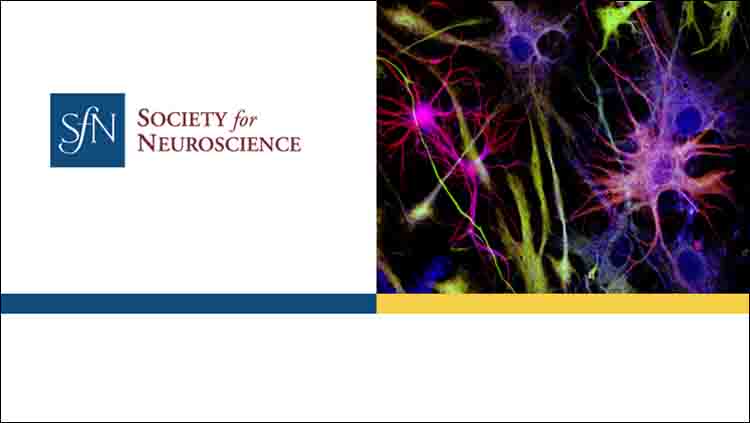BRAIN Initiative Celebrates 10-Year Anniversary

John Ngai is the Director of the NIH’s Brain Research through Advancing Innovative Neurotechnologies® (BRAIN) Initiative. Over 27 years as a Berkeley faculty member, Ngai trained 20 undergraduate students, 24 graduate students, and 15 postdoctoral fellows in addition to teaching well over 1,000 students in the classroom. He also served as the director of Berkeley’s Neuroscience Graduate Program and the Helen Wills Neuroscience Institute.
Below, Ngai discusses the current state of funding for the BRAIN Initiative, as well as the Initiative’s history and accomplishments at its 10-year anniversary.
Neuroscience Quarterly (NQ): What is the current state of funding for the BRAIN Initiative (BI), and what are the consequences of reduction at a critical moment in the program’s life cycle?
John Ngai (JN): The BRAIN Initiative is grateful for Congress’s support since the Initiative launched in 2014. As it stands, due to fluctuations in 21 st Century Cures Act authorizations and the reduction of base appropriations to the BI in FY 2023, the current $402 million FY 2024 budget for the BI reflects a $278 million, or 40% decrease, relative to FY 2023’s $680 million top-line appropriation. The drop in funding resulted in approximately 60% fewer projects funded in FY 2024, creating numerous lost opportunities to develop new innovative neurotechnologies, conduct discovery science to further our understanding of neural circuits, and advance desperately needed neuromodulation therapies to treat neurological/mental/substance use disorders.
If this cut is not restored, and with a further $81 million reduction slated in FY 2025 Cures Act funds, BI could fund only ~20% of new awards in FY 2025 compared to previous years, leaving even more groundbreaking research on the table. That said, whatever level of funding we ultimately receive, BI remains steadfast in our priorities and mission to develop tools, resources, and knowledge that will continue to revolutionize our understanding of the brain and accelerate these discoveries toward cures. The reality, however, is that we can only stretch limited dollars so far.
NQ: The BI was launched with seven initial goals. What strategies did BI use to achieve them?
JN: From the outset, the NIH BRAIN Initiative has strived to build a big tent that welcomes diverse perspectives and integrates talent across disciplines from the physical sciences, engineering, psychology, data science, and many others. Our strategy is to promote a multi-disciplinary approach, uniting tool makers with tool users to drive a virtuous cycle of technology and discovery.
Another key strategy has been to employ, where appropriate and opportune, a team-based approach, for example in our Team Brain Circuits Portfolio that supports large teams comprising both experimentalists and theoreticians, and in “big science” projects tasked with delivering resources like the brain cell atlases that could not have been accomplished by individual groups.
One of the seven goals of the BRAIN 2025 report was to advance human neuroscience and to understand what makes us uniquely human. Through the generous participation of patients undergoing neurosurgical procedures for conditions unrelated to the research at hand, our Research Opportunities in Humans program has moved circuits research into humans, with great care to both account for and anticipate the ethical challenges associated with probing the brain in living humans.
NQ: How would you briefly describe the headline achievements of the BI at its 10-year anniversary?
I don’t think we would have seen these efforts succeed without the coordinated team science approach that we cultivated so carefully...
JN: There are many, but one spectacular success is the creation of comprehensive cellular inventories of mouse, non-human primate, and human brains, and the entire wiring diagram of the Drosophila brain. These projects provide critical ground truth information for researchers studying neural circuit function. I don’t think we would have seen these efforts succeed without the coordinated team science approach that we cultivated so carefully, an achievement that can be applied to other large resource generating projects.
And we are now seeing amazing advances in brain computer interfaces, with spectacular albeit very early successes in brain-to-speech neuroprostheses allowing paralyzed “locked in” individuals to communicate. Similarly, we’ve seen recent advances in neuromodulation for treatment-resistant depression, obsessive compulsive disorder, post-traumatic stress disorder, binge-eating disorder, traumatic brain injury, post-stroke recovery, and opioid use disorder, with others to come. In many ways, this was the stuff of science fiction 10 years ago.
NQ: How have some of the individual BI-supported discoveries combined with each other to create new, system-wide insights of the brain?
JN: Through its diverse portfolio, BRAIN is driving a tool-driven revolution in which scientists are creating new vistas to explore the brain. By focusing on neural circuits with increasingly sophisticated experimental and theoretical approaches, we are learning, for example, how memories are formed and retrieved in humans, and finding predictive signatures for disabling brain conditions like chronic pain and obsessive-compulsive disorder.
...these data can likewise be used as training sets to drive the development of more powerful and efficient AI algorithms and “neuro-inspired” computer architectures.
Looking ahead, one exciting new frontier is in the emerging field of NeuroAI. While AI will be needed to make sense of the deluge of data being generated by BRAIN-funded and other projects, these data can likewise be used as training sets to drive the development of more powerful and efficient AI algorithms and “neuro-inspired” computer architectures.
NQ: In any decade-long project, there are unanticipated discoveries. Can you share some of those surprise findings?
JN: The BRAIN Initiative Cell Census project is a prime example of the power of team science to produce resources at a scale that are simply beyond the reach of any one research group. I’m not so much surprised by the project’s success as I am about the staggering depth and breadth of information about brain cell types that encompasses their molecular, anatomical, and physiological properties, information that will help inform research on neural circuits for decades to come.
It’s also been surprising and gratifying to see how far neuroscience has come in the ability to monitor activity from thousands, if not millions, of neurons. Ten years ago, this seemed like an aspirational goal. These new capabilities have come about from rapid advances in imaging technologies as well as from high-density recording electrodes. Researchers can now ask questions never before possible due to limitations of sampling only a handful of neurons at a time.
NQ: As you look back over a decade of BI-funded projects, how did the BI stand apart from longstanding neuroscience-research funders?
JN: BRAIN is technology-driven and disease-agnostic. As such, we are uniquely situated to create an environment friendly for disruption that transcends the boundaries of traditionally held disciplines to the benefit of the entire field.
...BRAIN has changed the neuroscience landscape by leveraging the power of big science that previously was the domain of other fields such as astronomy, high-energy physics, environmental science, and genomics.
And while we rely on the creativity of individual scientists who come up with great questions to ask and innovative approaches to move the field forward, BRAIN has changed the neuroscience landscape by leveraging the power of big science that previously was the domain of other fields such as astronomy, high-energy physics, environmental science, and genomics.
I think this will continue to be a winning formula as we look forward to comprehensive cell atlases of non-human primate and human brains, and whole mammalian brain connectivity maps at synapse resolution — resources that will better enable the field to both pose and test better hypotheses about neural circuits in models of health and disease. The BRAIN Initiative plays a unique and important role in the dynamic and complex neuroscience ecosystem. The Initiative’s commitment to developing innovative neurotechnologies is critical for unraveling mysteries about the human brain and bringing treatments closer to the clinic for the millions who need them.























